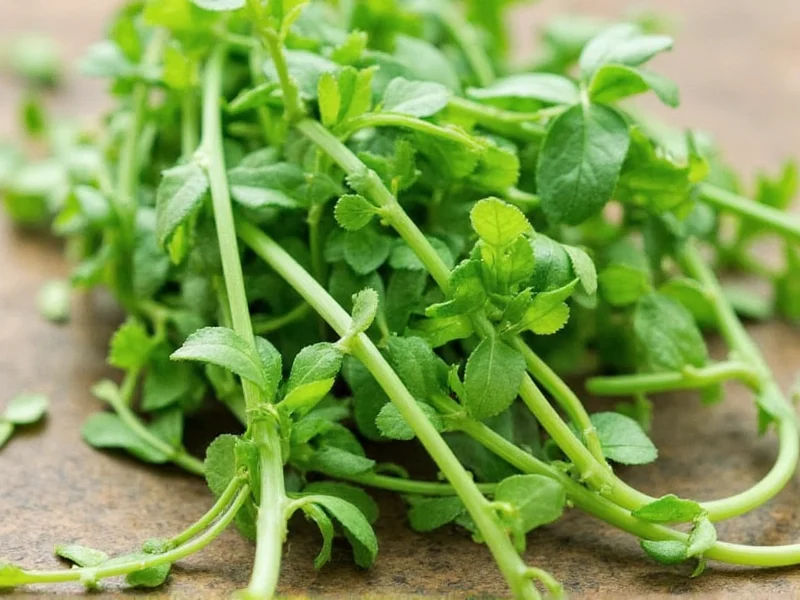Understanding what tarragon tastes like requires experiencing its complex flavor profile that sets it apart from other culinary herbs. The dominant characteristic is a sweet anise flavor, similar to fennel or star anise but more delicate. High-quality French tarragon delivers a sophisticated taste experience with multiple layers: initial sweet notes, followed by subtle licorice undertones, and finishing with a mild peppery bite and earthy herbaceousness.
Breaking Down Tarragon's Flavor Profile
When evaluating how would you describe tarragon taste, professional chefs and food scientists identify several key components:
| Flavor Component | Intensity (French Tarragon) | Comparison Reference |
|---|---|---|
| Anise/Sweet Licorice | High | Milder than star anise, stronger than fennel |
| Vanilla Notes | Moderate | Subtle background sweetness |
| Peppery Finish | Low-Moderate | Milder than black pepper, similar to chervil |
| Herbaceous Earthiness | Moderate | Similar to fresh basil but less sweet |
French vs. Russian Tarragon: Taste Comparison
Not all tarragon varieties taste the same. Understanding what does tarragon taste similar to depends on which variety you're using:
- French Tarragon (Artemisia dracunculus var. sativa) - Considered the superior culinary variety with a complex flavor profile: pronounced anise notes, subtle vanilla undertones, and a clean finish. It contains estragole, the compound responsible for its distinctive licorice-like flavor.
- Russian Tarragon (Artemisia dracunculoides) - Often sold as "tarragon" but significantly inferior for cooking. It has a milder, slightly bitter taste with minimal anise notes and more pronounced grassy, weedy flavors. Many professional chefs avoid this variety entirely.
When shopping for fresh tarragon, rub a leaf between your fingers. Authentic French tarragon will release a strong, sweet anise aroma, while Russian tarragon has a much weaker scent.
Culinary Applications Based on Flavor Profile
The question what does tarragon taste good with has clear answers based on its flavor chemistry. Tarragon's sweet-anise profile complements:
- Poultry dishes - Particularly chicken and turkey, where its subtle sweetness enhances without overpowering
- Egg preparations - Classic in Béarnaise sauce and egg salads
- Vinegar infusions - Tarragon vinegar captures its delicate flavor beautifully
- Seafood - Works well with delicate fish like sole and salmon
- Creamy sauces - Balances richness while adding complexity
Chefs recommend adding fresh tarragon late in the cooking process to preserve its volatile flavor compounds. When using dried tarragon, remember that the anise notes become more pronounced while the delicate vanilla undertones diminish.
Tarragon Substitutes When You Don't Have the Real Thing
If you're wondering what tastes similar to tarragon, several herbs can approximate parts of its flavor profile:
- Chervil + Basil - Combines chervil's mild anise notes with basil's sweetness (best substitute)
- Fennel fronds - Provides the anise component but lacks the herbal complexity
- Dill + Parsley - Offers herbaceous notes but misses the anise element
- Tarragon vinegar - When fresh herb isn't available, this captures some flavor essence
None of these substitutes perfectly replicate authentic French tarragon's complex flavor profile, which explains why it remains a prized herb in professional kitchens despite being challenging to grow.
Maximizing Tarragon's Flavor in Your Cooking
To fully appreciate what tarragon tastes like in dishes, follow these professional tips:
- Use fresh tarragon whenever possible - drying significantly alters its delicate flavor balance
- Add at the end of cooking to preserve volatile flavor compounds
- Pair with acidic ingredients like lemon juice or vinegar to brighten its flavor
- Avoid high-heat cooking which can make it bitter
- Store fresh sprigs in a glass of water in the refrigerator, covered with a plastic bag
When used properly, tarragon elevates simple dishes with its distinctive flavor. The classic French "fines herbes" blend combines tarragon with chives, parsley, and chervil, demonstrating how its unique taste harmonizes with complementary herbs.
Frequently Asked Questions About Tarragon's Taste
Does tarragon taste like licorice?
Tarragon has subtle licorice notes but isn't as strong as actual licorice root. The flavor is better described as sweet anise (like star anise but milder) with additional herbal complexity. French tarragon contains estragole, the same compound found in anise and fennel, which creates this characteristic flavor without being overpowering.
Why does my tarragon taste bitter?
Bitter tarragon is usually one of two issues: you may have Russian tarragon (which has natural bitterness) instead of French tarragon, or you've overcooked the herb. French tarragon becomes bitter when exposed to high heat for extended periods. Always add fresh tarragon at the end of cooking, and verify you're using the French variety for authentic flavor.
How does dried tarragon compare to fresh in flavor?
Dried tarragon loses much of its delicate complexity. The sweet vanilla notes diminish significantly while the anise/licorice elements become more pronounced. Dried tarragon also develops slightly woody, musty notes that aren't present in fresh. For best results, use one-third the amount of dried tarragon compared to fresh, and add it earlier in the cooking process to allow rehydration.
What makes French tarragon taste different from other varieties?
French tarragon contains higher concentrations of essential oils, particularly estragole (60-80%), which creates its signature anise flavor. It also contains smaller amounts of other compounds like methyl chavicol and limonene that contribute to its complex profile. Russian tarragon has significantly lower essential oil content (20-30% estragole) resulting in a flatter, more bitter taste with less aromatic complexity.











 浙公网安备
33010002000092号
浙公网安备
33010002000092号 浙B2-20120091-4
浙B2-20120091-4